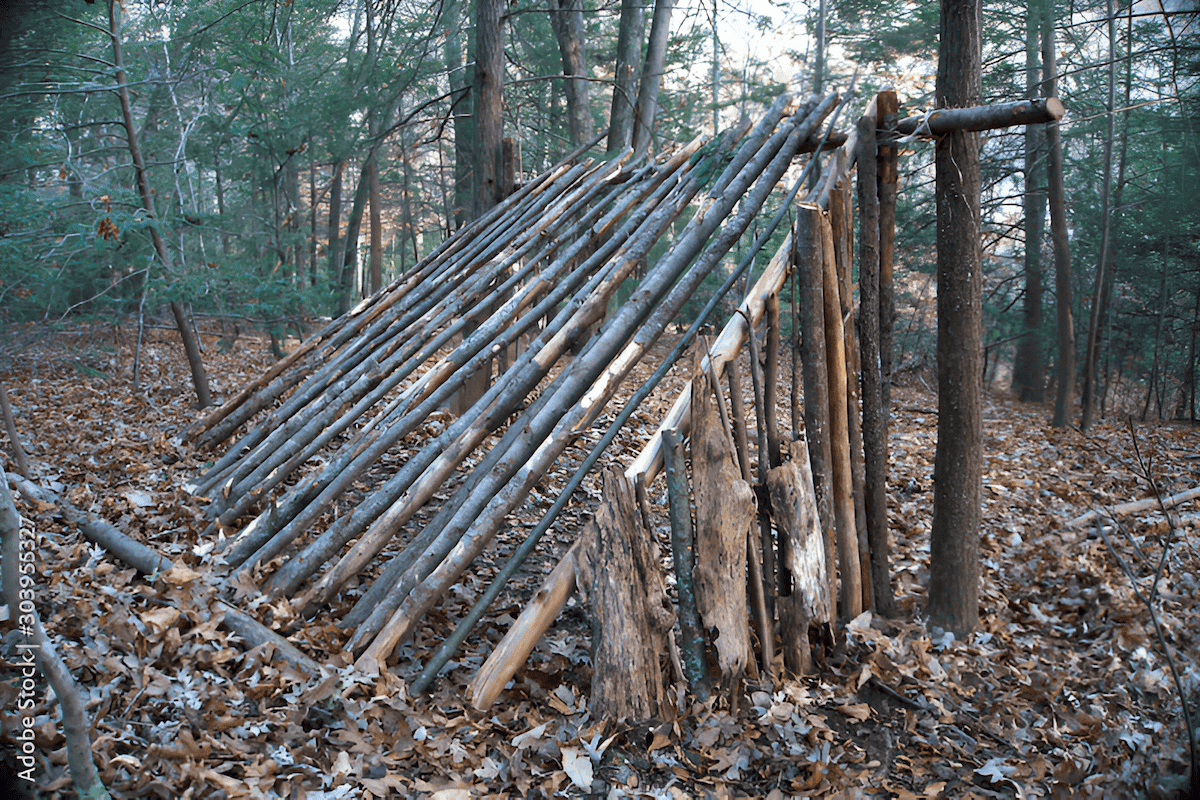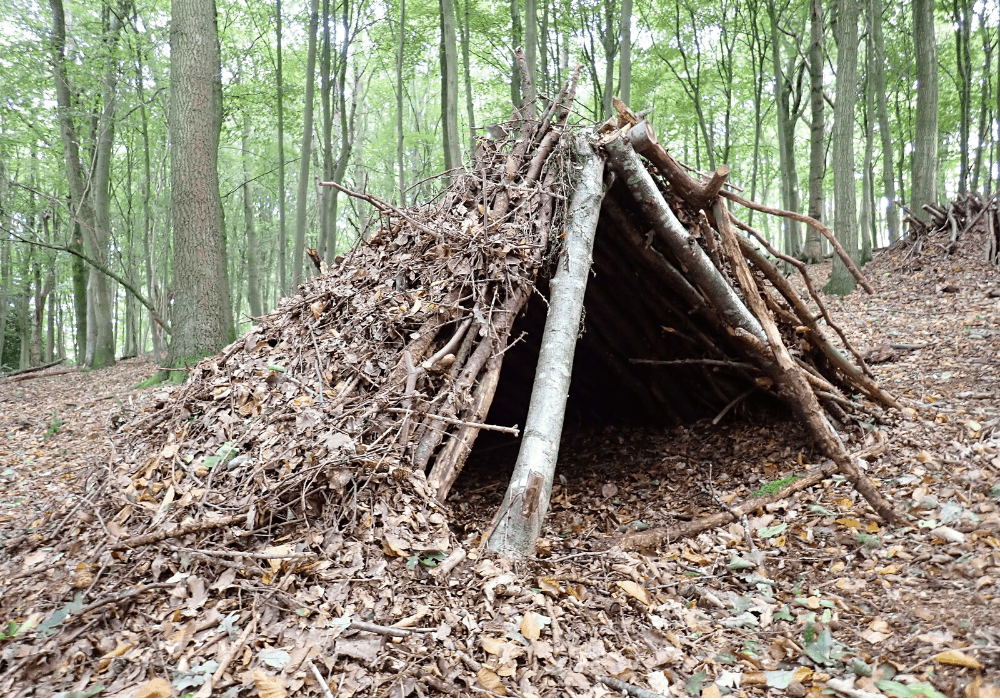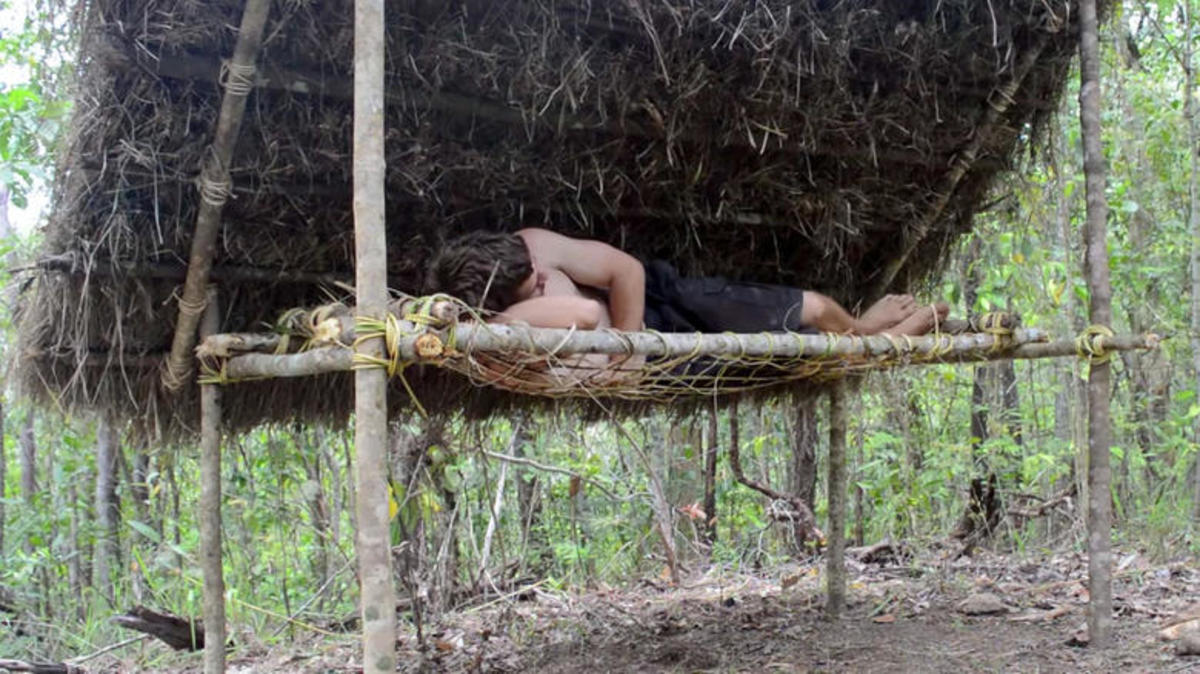
Our Top 10 Survival Shelters | THE SHED KNIVES BLOG #90
Welcome back to The Shed Knives Blog for edition #90! If you're new here, welcome! As we push deeper into the year, it’s the perfect time to sharpen your outdoor skills and dive into some serious bushcraft and survival training. One of the most essential things you can learn is how to build a reliable survival shelter.
In any survival situation, shelter is priority #1. It protects you from exposure, helps you retain body heat, and gives you a place to rest and recharge. In today’s blog, we’re covering our top 10 survival shelters, how to build them, and when to use each one. Whether you’re practicing in the backyard, out on the trail, or deep in the backcountry, these shelters are critical skills to add your training.
1. Lean-To Shelter

A classic and easy to build structure, the lean-to is ideal for quick setup in just about any environment.
Best For: Mild weather, short-term survival
Materials Needed: Long branch/pole, support stakes or trees, debris for covering
Why We Like It:
-
Quick to build
-
Easy to scale up
-
Works well with a fire and reflector wall
Pro Tip: Use a knife like the 2025 Tuatara to cut notches and sharpen stakes for a stronger build.
2. A-Frame Shelter

The A-frame offers more enclosed protection than a lean-to and is ideal in windier or colder conditions.
Best For: Overnight shelter in cool, wet weather
Materials Needed: Ridgeline between two trees, branches, tarp or natural debris
Why We Like It:
-
Good weather resistance
-
Better heat retention
-
Easy to construct with minimal tools
3. Debris Hut

One of the best survival shelters for insulating body heat using only natural materials.
Best For: Cold weather or when you have limited to no gear
Materials Needed: Ridgepole, Y-branches, leaves, grass, bark
Why We Like It:
-
Maximum insulation with natural materials
-
Low profile helps trap heat
-
Great for stealth or solo survival
Heads Up: It takes some time to collect the amount of debris needed, so plan accordingly.
4. Tarp Shelter

Got a tarp and some paracord? You’ve got a shelter.
Best For: Lightweight backpacking, emergencies
Materials Needed: Tarp, cordage, trees or poles
Why We Like It:
-
Super versatile (can be set up in multiple configurations)
-
Lightweight and compact
-
Fast deployment during sudden weather shifts
Popular Variations: Plow-point, diamond pitch, A-frame tarp tent
5. Snow Cave

In deep winter conditions, sometimes your best shelter is under the snow itself.
Best For: Sub-zero survival, alpine terrain
Materials Needed: Snow (deep enough to dig), shovel or improvised digging tool
Why We Like It:
-
Natural insulation from snow
-
Blocks wind and cold
-
Can stay surprisingly warm inside
Warning: Snow is heavy and this style shelter will consume the most amount of calories.
6. Wickiup

A cone-shaped shelter traditionally used by Native American tribes. Think of it as a simpler version of a teepee.
Best For: Long-term bushcraft camps
Materials Needed: Long poles, lashings, bark, leaves, grass
Why We Like It:
-
Can handle fire inside
-
Strong against wind
-
Ideal for group shelter or base camp
This shelter takes more time to build but pays off for long term setups.
7. Tree-Pit Snow Shelter

Dig down instead of out. This shelter uses the natural space around a tree to trap warmth.
Best For: Winter survival in forested, snowy terrain
Materials Needed: Snow, pine tree, boughs, branches
Why We Like It:
-
Fairly fast to build
-
Great windbreak
-
Uses natural tree cover
Add pine boughs to the floor and walls for insulation and comfort.
8. Raised Platform Shelter

When bugs, moisture, and snakes are a problem, sleeping off the ground is a must.
Best For: Swampy terrain and tropical climates
Materials Needed: Poles, lashings, paracord, tarp
Why We Like It:
-
Keeps you off wet ground
-
Useful in high-insect areas
-
Can double as a gear platform
Note: Requires more construction effort but well worth it in damp environments.
9. Bough Bed & Open Fire Shelter

Combine a minimalist lean-to with a raised bed of boughs and a long fire in front to stay warm all night.
Best For: Cold nights with available firewood
Materials Needed: Logs, pine boughs, fire tools
Why We Like It:
-
Incredible warmth with a reflector
-
Allows you to sleep with minimal insulation
-
A true survival classic
Warning: Always manage your fire carefully, especially in dry areas.
10. Poncho Shelter

No tarp? No problem. A poncho can double as a small but effective emergency shelter.
Best For: Emergency setups and ultra-light packing
Materials Needed: Poncho, paracord or sticks
Why We Like It:
-
Compact and dual-purpose
-
Fast setup for sudden rain
-
Great backup when you’re moving light
Pair it with a bivy sack or sleeping bag for extra warmth and protection.
Final Thoughts
 Featured: 2025 Shed Knives Tuatara
Featured: 2025 Shed Knives Tuatara
There’s no one-size-fits-all survival shelter. The best one depends on your environment, weather, available tools, and how long you plan to stay. From quick tarp shelters to fully insulated debris huts, each of these 10 structures has its strengths (and weaknesses) so knowing when to use each one can make all the difference.
To explore a wide range of high-quality knives, like the entire 2025 Shed Knives Collection, visit the Shed Knives website HERE. Thank you for reading and stay tuned for the next edition of The Shed Knives Blog.
Know another outdoor enthusiast who may find value in this blog? Feel free to share the link of this blog with them so we can continue to educate & encourage our fellow outdoor & knife enthusiasts. Thank you for your support. - WJB
________________________________________________________________
About The Author:

Jack Billings is the 20 year old CEO and Founder of Shed Knives, a rising manufacturer of high-quality fixed blade bushcraft knives. With over 5 years of experience as a knife maker, he has developed a reputation for crafting durable, reliable knives that are designed for outdoor enthusiasts and bushcrafters alike. Jack started making knives at the age of 13 and has been refining his craft ever since.
In addition to his expertise in knife making, Jack has a High School Degree from POLYTECH High School, where he studied Automotive Technology and obtained his ASE Certification. He is also a content creator for Shed Knives and has reached the eyes of over 1,000,000 people on Shed Knives platforms across the world through his work.
When he's not working on knives, Jack enjoys exploring the outdoors and has a passion for bushcraft. He also has a passion for the automotive world and enjoys learning about new technologies and advancements. Additionally, he has a great interest in language and is studying Spanish, German, and Arabic.
Jack's personal mission is to constantly improve himself, his products, and his processes in order to stay ahead of the rapidly changing interests of the knife industry and to surpass the competition. He takes great pride in American manufacturing and is committed to contributing to the growth of the world knife industry through his work.
Where To Buy Shed Knives:
➤ Shed Knives: https://shedknives.com/
➤ Bladebinge: https://bladebinge.com/profiles/shed.knives
➤ eBay: https://www.ebay.com/usr/shed.knives
S.K. Social Media Links:
➤ Instagram: https://www.instagram.com/shed.knives/
➤ Facebook: https://www.facebook.com/official.shed.knives/
➤ Twitter: https://twitter.com/shed_knives
➤ Pinterest: https://www.pinterest.com/shedknives/
➤ YouTube: https://www.youtube.com/@shedknives
➤ Rumble: https://rumble.com/c/c-2051230
➤ LinkedIn: https://www.linkedin.com/company/shed-knives/
➤ Telegram: https://t.me/shedknives
➤ The S.K. Blog: https://shedknives.com/blogs/theskblog
➤ Threads: https://threads.net/@shed.knives
➤ Buy Me A Coffee: https://www.buymeacoffee.com/shedknives
➤ Reddit: https://www.reddit.com/r/shedknives/

Leave a comment